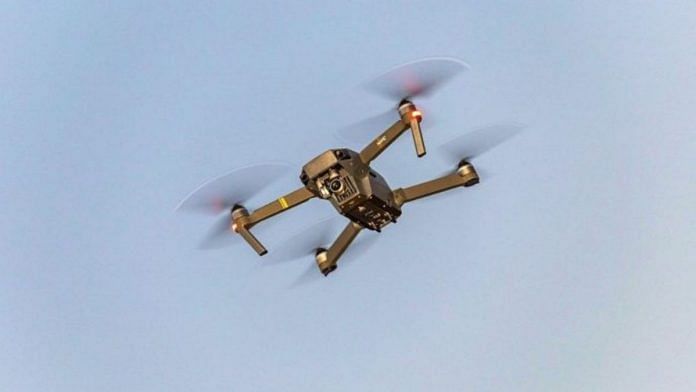New Delhi: Intelligence agencies have flagged the use of Chinese components, including electrical, in drones purchased by the Indian armed forces from domestic private players, most of which are deployed in border areas in the northern and eastern sector.
The Ministry of Defence (MoD) has put on hold an order placed by the Army with a company for logistics drones that were intended for deployment along India’s borders with China.
According to senior Army officers, the force along with the defence ministry are now formulating an “appropriate methodology” to ensure Chinese components do not make their way into military drones. They said that there was a significant risk associated with Chinese components, especially electronics, pertaining to transfer of data.
“It is a very live issue. Even the government has also taken some action in this in the recent past,” said Major General C.S. Mann, Additional Director General, Army Design Bureau (ADB).
He was referring to a letter from the defence ministry to industry bodies—Federation of Indian Chambers of Commerce and Industry (FICCI), Assocham, and CII’s Society of Indian Defence Manufacturers (SIDM)—in June this year, asking them to inform their member companies not to use Chinese parts in drones.
“It has come to the notice of the Department of Defence Production, Ministry of Defence, that Dhaksha Unmanned Systems Pvt. Ltd; Sky Industries, Gandhinagar, and Garuda Aerospace Pvt. Ltd are reportedly engaged in selling/supply of UAVs/drones to Indian Defence Forces, which include assembly and integration of Chinese components,” it said.
According to sources, an order for 200 logistics drones ordered from Dhaksha Unmanned Systems Pvt. Ltd. has now been put on hold, and the named companies have been asked “to prove that they are not using Chinese components.”
Sources added that one of the main lacunae was that while defence procurement rules prohibit Chinese components, the force was relying on self-certification by drone makers claiming their products were free of Chinese components.
Responding to a query by ThePrint, Major General Mann, said, “Self-certification is one of the methods. Deliberations are on. We are working with Department of Defence Production, MoD, and appropriate methodology of identifying this will come into effect,” he said.
He added that while no timeline has been set, the Army is trying to develop a methodology as soon as possible. “Various methods are being deliberated upon and we will come out with a particular framework.”
Also read: Army to use heavy cargo drones in high altitude areas soon, optimisation of Pioneer Corps underway
Him Drone-a-thon event
Major General Mann further stated that the upcoming “Him Drone-a-thon,” being organised by FICCI and Army’s Northern Command in Leh later this month, will also look into this aspect of defence procurement.
The event will see multiple Indian drone companies showcasing their products to the Northern Command for deployment in high-altitude areas under the 14 Corps.
“The drones operating in the high altitude are different from those operating in the plains. While a drone in plains can go up to 5,000 feet, in mountainous terrain, they are launched at that height. Many times, they won’t take off or fly at low altitude and endurance comes down,” Major General P.S. Bhatti said while briefing reporters here.
Interestingly, the Northern Command has inducted around 800 various types of drones, including loitering munitions.
(Edited by Tarannum Khan)
Also read: India’s quest for small arms continues, with some twists and turns and heartburn along the way






